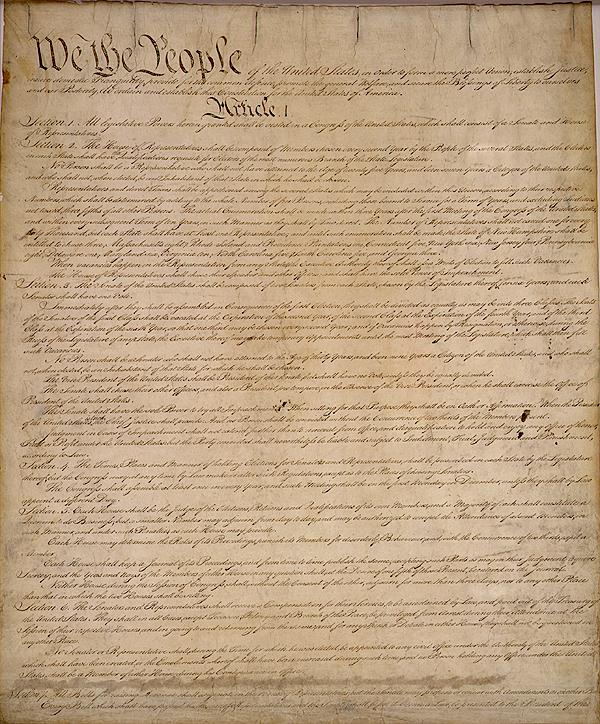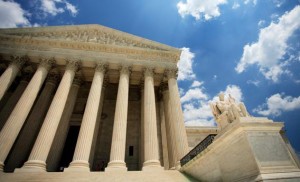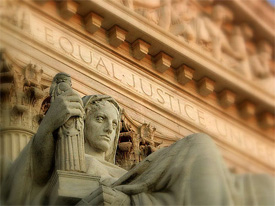The Better Story
In the first chapters of The Nation That Never Was, Kermit Roosevelt explains the many problems with the standard story of the US. In the last chapter he offers us a better story. What follows is mostly Roosevelt’s version, but I’ve added more history. Roosevelt’s is at pp. 202-4.
A Version Of The Better Story
During the Revolutionary War, the colonists established a federation of the 13 original colonies. They wanted to keep their existing governments, and feared a strong central government. Their first try, the Articles of Confederation, failed because the central government was too weak and the states frequently ignored it. Then they tore up the Articles and replaced them with the Founders Constitution. In order to gain support for a stronger central government, they put in provisions supporting the continuation of slavery and gave states with smaller white populations greater power in the national government.
From the very beginning Black people resisted slavery by escaping and rebelling in the face of murder and torture. That continued under the Founders Constitution. They and the Abolitionists set up escape routes, and tried every legal route to saving escapees. They rallied, protested, spoke, wrote, appealed to Congress, and demanded freedom and equality. Gradually the movement for freedom became an powerful political force, driven by the principle that all men are created equal. They meant equality in a actual society, not in a hypothetical natural law sense as in the Declaration of Independence, Leaders included Frederick Douglass and William Lloyd Garrison.
Urged on by the Black people and the Abolitionists, the United States government resisted the expansion of slavery into the territories, which the Supreme Court supported in Dred Scott. That led to a war with the Slave States which was won by the United States. A major factor in the victory was the 200,000 Black soldiers who fought and died to end slavery. The victorious United States threw out the governments of the seceding states, forced the enactment of the Reconstruction Amendments, and passed laws to enforce them. This is called the Second Founding.
The Second Founding recreated the United States under the principles laid out by its Leader, Abraham Lincoln. His most famous statement of these principles is in his Gettysburg Address: the United States is “… conceived in liberty, and dedicated to the proposition that all men are created equal….”
This became our guiding principle. Lincoln told us that we must dedicate ourselves to the principle of equality that the brave men of the United States had died for. He told us we were starting anew with this principle foremost in our minds:
… that this nation, under God, shall have a new birth of freedom — and that government of the people, by the people, for the people shall not perish from the earth.
But not everybody agreed that we were starting over. The secessionists never quit. Their first step was to murder Abraham Lincoln. Then they took power in the former slave states. The Supreme Court gutted the Reconstruction Amendments. That enabled the secessionists and White Supremacists to establish legalized segregation, blessed by the Supreme Court in cases like Plessy v. Ferguson.
Black people never quit either. Despite participating in more wars on behalf of a segregated nation and being treated like dirt on their return, through decades of lynching and white race riots, they continued to fight for equality. After the Second World War, they began to achieve success and for once the Supreme Court didn’t block them.
The, beginning in the 1980s, the White Supremacists pushed back against equality, and achieved partial victories, especially in the revanchist Supreme Court. But Black people persevere, and with them all people of conscience, and this time other marginalized groups join the march towards equality, Black, Brown, Asian, LGBT, young people, all of us together.
That’s our nation: always striving for equality, always striving for fairness and equality, always fighting the darkness.
Addendum on Abraham Lincoln
When the Civil War started, Lincoln was willing to accept slavery as the price of unifying the states. That changed during the war. Roosevelt says the Fort Pillow Massacre played a big role in that change. Lincoln had established units of Black Soldiers. They were among the defenders of Fort Pillow, near Memphis in April, 1864. The secessionist troops under the command of Nathan Bedford Forrest, later the first head of the KKK, captured a group of US troops trying to surrender, including approximately 300 Black soldiers and their White officers. The Southerners murdered the Black soldiers in cold blood. A few days later Abraham Lincoln gave a speech called the Address At The Sanitary Fair. Here’s a short section.
A painful rumor, true I fear, has reached us of the massacre, by the rebel forces, at Fort Pillow, … of some three hundred colored soldiers and white officers, who had just been overpowered by their assailants. There seems to be some anxiety in the public mind whether the government is doing its duty to the colored soldier, and to the service, at this point. At the beginning of the war, and for some time, the use of colored troops was not contemplated; and how the change of purpose was wrought, I will not now take time to explain. Upon a clear conviction of duty I resolved to turn that element of strength to account; and I am responsible for it to the American people, to the christian world, to history, and on my final account to God. Having determined to use the negro as a soldier, there is no way but to give him all the protection given to any other soldier.
Why This Is A Better Story
Roosevelt offers several reasons why this is a better story. It has the advantage of being accurate, of course. The standard story ignores the role of Black People in our history. The better story includes Black people and tells us of their valor and perseverance, and the contributions they made to the story of America. In doing so it makes room for the contributions of other groups ignored by the standard story. The better story opens the way to real unity of all of us regardless of all the many ways in which we are different.
The better story gives us a new set of heroes. It valorizes the soldiers who personified the words of Julia Ward Howe’s Battle Hymn Of The Republic: “… As He died to make men holy let us die to make men free ….” These regular people, Black and White, are worthy of emulation. That’s not entirely true of the Founders, who fought for their own freedom, and were morally compromised by the denial of freedom to their slaves, their enslaved concubines, and enslaved children.
We can respect the leaders of the Second Founding, Lincoln and the Senators and Representatives who enacted the Reconstruction Amendments and related legislation. We do not have to consider their personal lives, because the better story is about contributions to the future, not an unhealthy fixation on the always problematic past.
Similarly, the better story tells us about the wrong way to be an American. People who oppose these heroes and the values they lived out, and their contributions to our democracy, are not good citizens.
The better story shows us how we can be better citizens: by trying to make America a better place.







